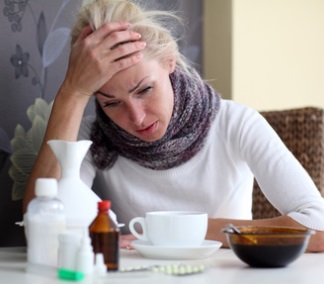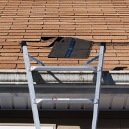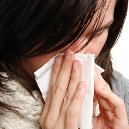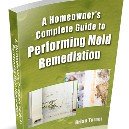Find a pre-screened local mold removal specialist Free Estimate
Find a Mold Specialist Now
Click or Call, Toll-Free 24/7
Respiratory Infections
Due to Mold Exposure
Respiratory infections, including sinus infections, bronchitis and pneumonia, are common symptoms of mold exposure. Other common symptoms of exposure to mold include coughing, sneezing, wheezing, headaches, sore throats, difficulty breathing, fatigue and a general feeling of malaise. Because these symptoms are rather vague and can be caused by so many things, they often aren’t recognized as symptoms of exposure to mold. Therefore a person might receive treatment that’s not effective and continue to suffer symptoms or even experience worsening health for quite some time, if they continue to be exposed to mold.
How Do You Know if Respiratory Infections are Caused by Mold?

Often it’s hard to tell. If you know you’ve been exposed to mold, or think your symptoms might be related to mold exposure, let your doctor know mold may be a factor in your illness. He or she may suggest doing some tests to help diagnose your condition and determine the cause of it. Tests may include blood tests, chest x-rays, examining a sample of your sputum and/or a bronchoscopy, a procedure in which the doctor can examine your airways with a tiny camera.
Treatment
Treatment of respiratory infections will depend on your diagnosis and on the severity of your condition, but may include antibiotics, decongestants, acetaminophen or ibuprofen to reduce fever, bronchodilators to open up your airways, steroids to reduce swelling in the sinuses and airways, medications to loosen and thin secretions in the lungs and airways, and pain relievers. Follow your doctor’s advice about which medications to take. Often a combination of medications is needed to treat these kinds of infections, but the risk of unwanted and potentially harmful side effects is increased when taking multiple drugs at the same time, so it’s important to let your doctor know about all medications, prescription and over-the-counter, that you take and to follow instructions carefully.
Most sinus infections and other minor illnesses can be treated on an outpatient basis, but in severe cases, hospitalization may be required to treat life-threatening conditions like pneumonia. If your condition was caused or made worse by exposure to mold, you’ll also need to avoid further exposure in order to make a full recovery and prevent future illness or infection.
Preventing Future Exposure to Mold
Most people with mold-related health problems are exposed to mold in the home. While there is plenty of mold outdoors, in the open air the mold spores spread out more and in most areas, people simply do not inhale enough mold spores to lead to health problems. While there may be mold in other indoor areas, most people spend more time in their own homes than anywhere else, so that is where the prolonged exposure likely to cause respiratory infections and other serious mold-related health problems is most likely to occur.
If you suspect your health problems are symptoms of mold exposure, you’ve probably already found mold growing in your home. However, mold often grows in places where it’s hard to see, like inside walls, inside heating and ventilation ducts, under carpets and above ceiling tiles. In order to remove all of the mold, you’ll first need to make sure you’ve located it all.
We recommend calling in a mold remediation professional for a free mold inspection and in-home consultation. If you’re experiencing health problems related to mold exposure, especially respiratory problems, it’s recommended that you hire a professional to handle the mold removal so that you don’t further exposure yourself, possibly worsening your condition. Even if you are planning to do the job yourself, though, you can benefit from some expert advice on the matter. There’s no cost and no obligation, so there’s nothing to lose. Follow this link to find experienced mold remediation professionals offering free inspections and in-home consultation in your area.
Return From Respiratory Infections To Our Main Symptoms Page
Free Home Inspection By A Mold Removal Specialist
Search This Website
Recent Articles
-
See Our 5 Recommended Mold Removal Companies in Covington, KY
Apr 16, 25 12:59 PM
-
See Our 5 Recommended Mold Removal Companies in Wheaton, IL
Jun 20, 24 10:33 AM
-
See Our 5 Recommended Mold Removal Companies in Aberdeen, SD
Oct 08, 21 04:05 PM




